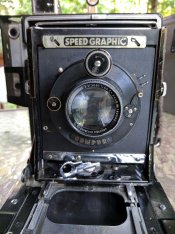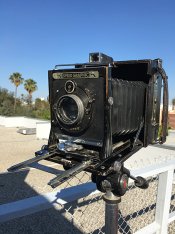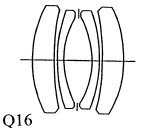I have to disagree here as nothing on the rangefinder has changed and if set up correctly returning the lens to infinity will restore the accurate relationship of the lens and rangefinder.
Lens are rarely their marked focal length, they can be up to 3mm either side of the marked focal length, so as long as its the lens the rf was calibrated for all is good but if its another lens with the same marked focal close focused distances may be off. The same goes for focus scales, they are scribed for that exact focal length.
Marc, Focusing with the rangefinder only on a target 50 to 100 feet away then moving closer check the rangefinder to the focus scale on the camera if they do not agree at the focus scale distance then adjust the rangefinder so that they do.
Now add a second pair of infinity stops and set them so that the Rodenstock lens can be set to the same position repeatedly. Now make a focus scale for the Rodenstock lens starting at infinity and working closer until you reach the same close distance of the existing focus scale or run out of bellows whichever comes first. (A 254mm lens on a Speed will focus to somewhere between 15 to 25 feet.) Now with a focus scale for the Rodenstock then you can focus with the rangefinder then transfer the focused distance from the rf matched focus scale to the Eurynar focus scale and be in focus without using the ground glass.
Now to the lens, 180946. A lens Collectors Vade Mecum shows an abbreviated version of Rodenstock serial numbers with 50,000 in 1910 and 200,000 in 1920 putting yours 1918-1919 vintage.
"Eurynar This was a major product, 50,000 being sold between 1909-1914."
"(d) f6.8. Examples noted have been 240mm, and 475mm for 14x17in. It was a Doppel Anastigmat in 1918
when fitted to the Enolde plate from Korelle.
Thus this is was made in 5 speeds and these variations may partly be due to the focal lengths (B.J.A. 1911,
p1260). They seem often to be 3-glass type Q16, but this seems to be a case where two or three layouts
may have been used under the same trade name. Thus a Gauss (Rod009) may have been used for a wider
angle version and a dialyt (Rod008) sold for narrower angle lenses. It has been noted as an f6.8 180mm lens.
It was continued into the interwar years as Series 1, f6.8 (Gauss); Series 111, f5.4; Series 1V, f4.5, and f3.8.
The f4.5 was said to cover 55° and have a dialyt layout. In use it was nice, especially if closed down a little. It
was made as 180, 210, 240, 300mm. (Series 11 is not known here.)"
View attachment 181945 View attachment 181946 View attachment 181947





